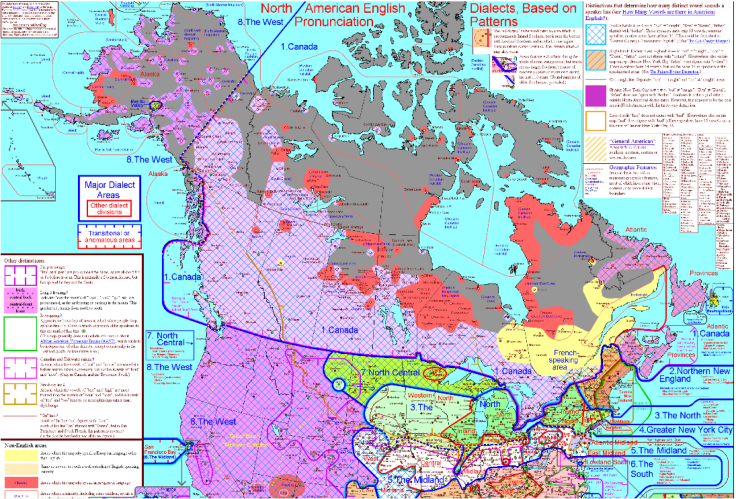In Defense Of The 'Most Unreadable And Confusing' Map Ever

As a Canadian living in the United States, I get a lot of flak for the way I speak. But a map that has been gaining attention online has given me a new way to think about my funny “ehs.”
Rick Aschmann, a professional linguist and Christian missionary, created a dialect map of North America, where he painstakingly tracked the eight major English dialects and their unique idiosyncrasies. To do so, he compiled tons of YouTube clips from Canadian and American native English-speakers and included several dialect “tests” to help viewers learn more about how they speak.
In an interview, Aschmann said the purpose of his project was to focus on “sound patterns” and how many “each dialect has and how they’re organized.”
For instance, do you pronounce the letter “l” in the words "calm," "yolk" or "talk?" How about the words “half” or “would”? Apparently in parts of Wyoming, Nebraska, Wisconsin, Nevada and Oklahoma, this is a common thing. Another fun one is whether you pronounce the words “cot” and “caught” the same way. I do.
Some say the map is unreadable and confusing. I’m not a linguistics expert, but I do know it’s a complicated topic, and this map demonstrates that.
The map may be entirely based on Aschmann’s own perceptions on how a person speaks, with YouTube as his encyclopedia -- and that’s OK. That’s what makes it intriguing -- it's also the reason behind its popularity.
Besides, I can’t insult a guy who has reasonably explained why I don’t say “aboot.” Apparently, Montrealers like myself are exempt from the way most Canadians raise their vowels at the end of words like “about,” “out,” and “house.”
And although I may be in denial of my Canadian accent, I’m not alone.
“The vast majority of speakers of any language are totally unaware of the fine detail of their pronunciation system, and most Americans and Canadians cannot tell what side of the border someone is from simply by their pronunciation,” Aschmann said.
Pretty neat, eh?
© Copyright IBTimes 2024. All rights reserved.












